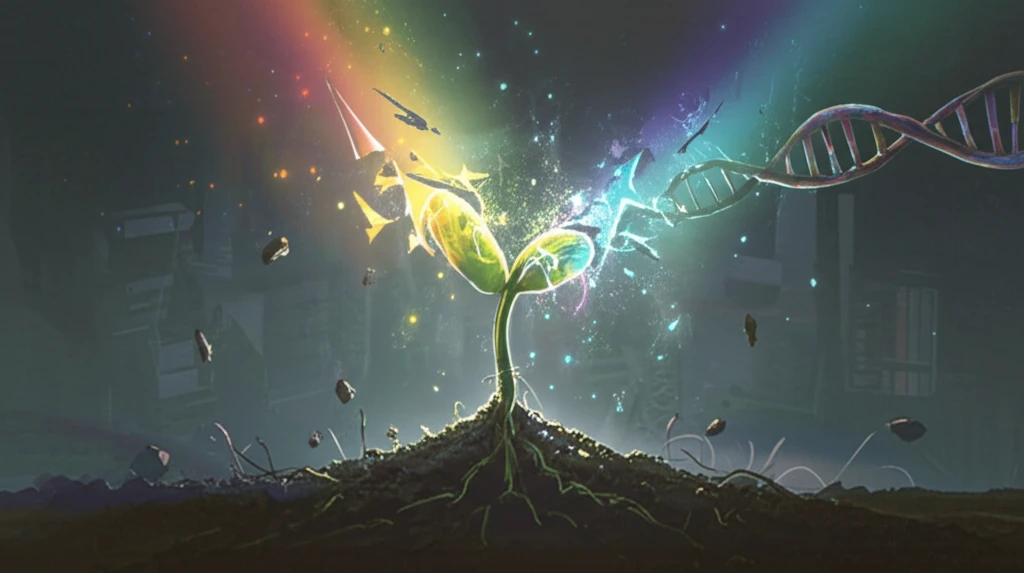
Decoding Plant Growth: How AGB1 and BBX21 Control Hypocotyl Elongation
"Unlocking the Secrets of Arabidopsis: New Research Reveals the Intricate Dance Between Light, Hormones, and Genetic Regulators in Plant Development"
For centuries, humans have been captivated by the mysteries of plant growth, meticulously observing the way seedlings push through the soil, stretching toward the life-giving sun. This seemingly simple act of growth, known as hypocotyl elongation, is a complex process orchestrated by a symphony of internal and external signals. Light, hormones, and intricate genetic mechanisms intertwine to dictate the pace and direction of a plant's early development.
New research has emerged shedding light on this fascinating process, zeroing in on the key players that govern hypocotyl elongation. This study focuses on two central components: the G-protein β subunit AGB1 and the B-box (BBX) domain-containing transcription factor BBX21, and how they function in the common laboratory plant, Arabidopsis.
The model plant, Arabidopsis, is used as a benchmark and testing platform due to its simplicity and accelerated growth cycles. The recent work dives into the nuanced relationship between these two regulators, revealing a delicate balancing act that shapes the architecture of young plants. These insights have relevance that extend far beyond the laboratory, potentially paving the way for innovations in agriculture, biofuels, and our understanding of the natural world.
The AGB1-BBX21 Dance: A Masterclass in Plant Regulation

The study’s results reveal a intricate relationship between AGB1 and BBX21, providing a potential cause-and-effect framework for light and hormone-mediated growth. The researchers demonstrated that AGB1 directly interacts with BBX21, effectively inhibiting its transcriptional activation function. BBX21, as a transcription factor, acts as a master switch, influencing the expression of numerous downstream genes involved in light signaling and hormone responses. By dampening BBX21's activity, AGB1 acts as a regulator of hypocotyl elongation.
- BBX22: Another member of the BBX family, plays a positive role in photomorphogenesis.
- HY5: A central transcription factor that promotes photomorphogenesis.
- GA2ox1: A gene involved in the gibberellin (GA) pathway, which plays a role in growth and development.
More Questions Than Answers
This research underscores the remarkable complexity of plant development, a field ripe with opportunities for further exploration. This study opens new avenues for research, the interaction between light signaling and hormone responses in plant development is an opportunity to understand and improve crop yields, biofuels, and more. These recent findings emphasize the significance of both new and legacy research when combined together.
